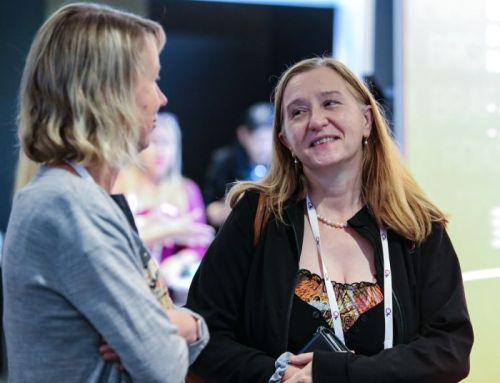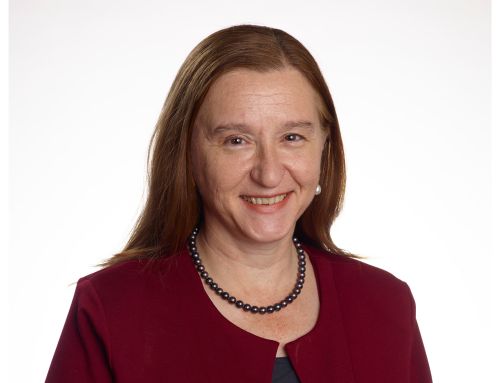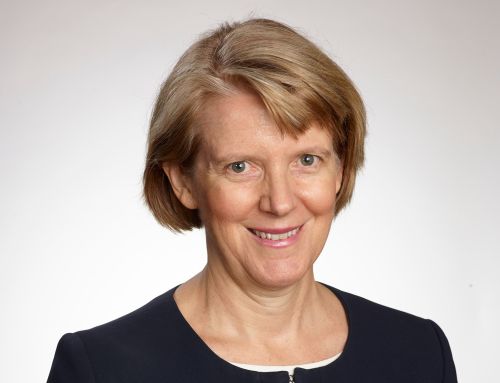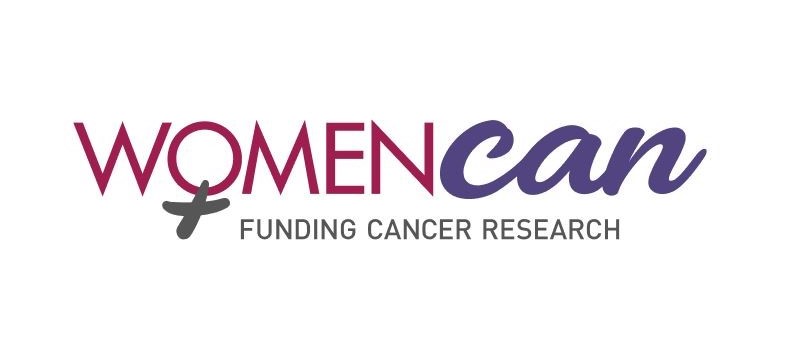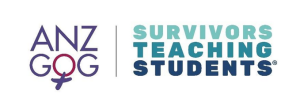“You get out of life what you put into it. If we put energy, passion and funds into research we will all reap the rewards.”
Too many families experience the tragedy that ovarian cancer can bring. Mary Anne’s family story is not unique, however, it is amazingly inspirational.
This is Mary Anne’s story
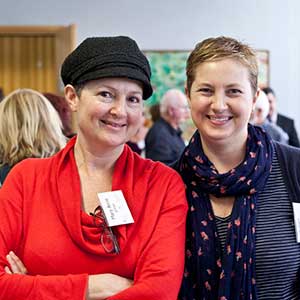
Mary Anne Jackson (left) and cousin Bridget both diagnosed with ovarian cancer.
My experience of ovarian cancer begins with my sister. Elizabeth (aged 41 at diagnosis) was a beautiful young mother with four children.
Around the October long weekend in 2009 I remember her mentioning that she felt a bit constipated and wondered if she should go to the doctor. A few weeks later we were gutted to hear that she had been diagnosed with stage three ovarian cancer.
Months of chemotherapy followed as she juggled the demands of motherhood. It was during this time we discussed the fact that our maternal aunt also lived with ovarian cancer for many years. Was there a link? We made contact with the Familial Cancer Clinic and began counselling and testing for the BRCA gene.
In 2010, we discovered that Elizabeth and my aunt carried the BRCA1 gene.
Further testing informed me that I too carried this inherited gene from the maternal side of the family. Further shock came around July 2010 when we heard the news that my cousin Bridget Whelan (aged 36 at diagnosis) had also been diagnosed with stage three ovarian cancer. Other family members began to be tested to determine if they too had an increased risk of breast and ovarian cancer.
In April 2011 I decided to have an oophorectomy removal of my ovaries in the hope of significantly reducing my risk of breast and ovarian cancer. I felt fortunate to be in the position to be proactive and that this knowledge was power to take action. The pathology at this time indicated slight changes in the cells on the surface of my ovaries and my decision to have them removed was deemed a good one by my gynaecological oncologist.
Shock and disbelief enveloped me, eighteen months later
I was diagnosed with stage three ovarian/peritoneal cancer. “How can this be? I have had an oophorectomy!” I recall saying in an utterly dazed state…..”. ‘One cell, Mary Anne…one cell was the reply. This was truly a dreadful time.
I remember a falling sensation as the intravenous drip was inserted to my hand to begin chemotherapy. My life was falling apart. The only thing I remember hearing as I left my oncologist’s rooms was I had a 43% five year life expectancy. Would I see my oldest son finish school?
My doctors told me that although very rare, a diagnosis of ovarian cancer can occur after an oophorectomy. I felt stripped, depleted and vulnerable. The chemo was tolerable for a few days then every task was a major effort. Some smells really set me off. I found it difficult to walk to the letterbox. The staff at the cancer clinic were so lovely so that helped.
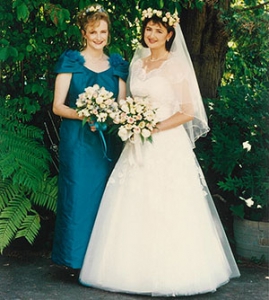
Elizabeth with Mary Anne at her wedding.
Elizabeth, Bridget and I supported each other. We laughed and cried together. Watching ovarian cancer progress and take over someone you love, is a form of torture. The ache of watching my sister fight and not win her three year battle sits in my heart every day.
I would say ovarian cancer is incredibly cruel. I want research to end it.
Researchers are making great progress in new drugs and targeted treatments and that gives me hope for the future. The fact that my sister and aunt had the same treatment even though there was twenty years between them is a problem. New treatments must come.
Walking with Bridget on her six year journey with ovarian cancer and seeing her incredible contribution to ANZGOG inspires me to continue her fundraising work for ANZGOG’s OASIS research initiative. She was just amazing! I believe this project will bring hope to the next generation who may have to face ovarian cancer.
It has been five years since my diagnosis and my CA125 remains low. I have never felt better and know I have been unbelievably fortunate to have had five treatment free years. I am extremely grateful.
Life has changed forever. People surprise you. Some things become less important. Some things become more important. My plans are to live a long and happy life enjoying every day with my family and friends.
There are some good news stories with this terrible disease. Mine is one of them and I wish there were more.
Thank you ANZGOG for working on the OASIS research initiative. You have my support today and every day but I know more funds are needed to make this research possible.
I hope that people reading my story will give to this amazing initiative to find new treatments for women with ovarian cancer.
ANZGOG, the Australia New Zealand Gynaecological Oncology Group, is the peak national gynaecological oncology cancer research organisation. We are recognised as a world leader in clinical trials research.
Our mission is to improve life for women with ovarian and other gynaecological cancers through research, cooperative clinical trials, information and awareness.
Sadly, Mary’s story is not unique.
Doctors have few new options in the way of treatment and currently all women are offered surgery then chemo as treatment The ‘one size fits all’ treatment approach has to change. Recent improvements in treatments have been based on clinical trials into new combinations of existing drugs, which have extended lives for an average of 3 – 6 months. Some women do better, for some there is little impact.
OASIS – Ovarian Cancer Alliance for Signal Seeking Research
The OASIS Initiative is a powerful alliance of ANZGOG and other leading ovarian cancer groups who are implementing a series of innovative nimble and cost effective research studies to find new treatments for ovarian cancer.
Why was the OASIS initiative started?
- Two out of three women who are diagnosed with ovarian cancer do not survive five years past diagnosis.
- For almost 30 years the treatment for ovarian cancer has been almost the same.
- We now know that there are seven different sub-types of ovarian cancer.
- New targeted therapies based on these molecular subtypes may be more successful than existing therapies.
Three new treatment trials are already funded by OASIS, with a further four in the pipeline. OASIS is poised to add exciting new studies as soon as funding becomes available.


